Community Environment
In photos: Mark Dickson Creek’s record-breaking chum run
Camera in hand, I slide down the steep banks of Mark Dickson Creek near the wooden bridge off Ray Nash Drive. My dress catches on more than a few blackberry vines. Later, I’ll find bloody scratches on my legs, but right now, I don’t notice — or care.
You see, I’m here for the salmon. I can see their pale bodies embroidering the creeksides, and the creek’s waters running over the forms of even more. It’s the end of the run, but the sheer number still thrashing through the creek on their mortal journey to spawn this late in November is remarkable. I have never seen the like.
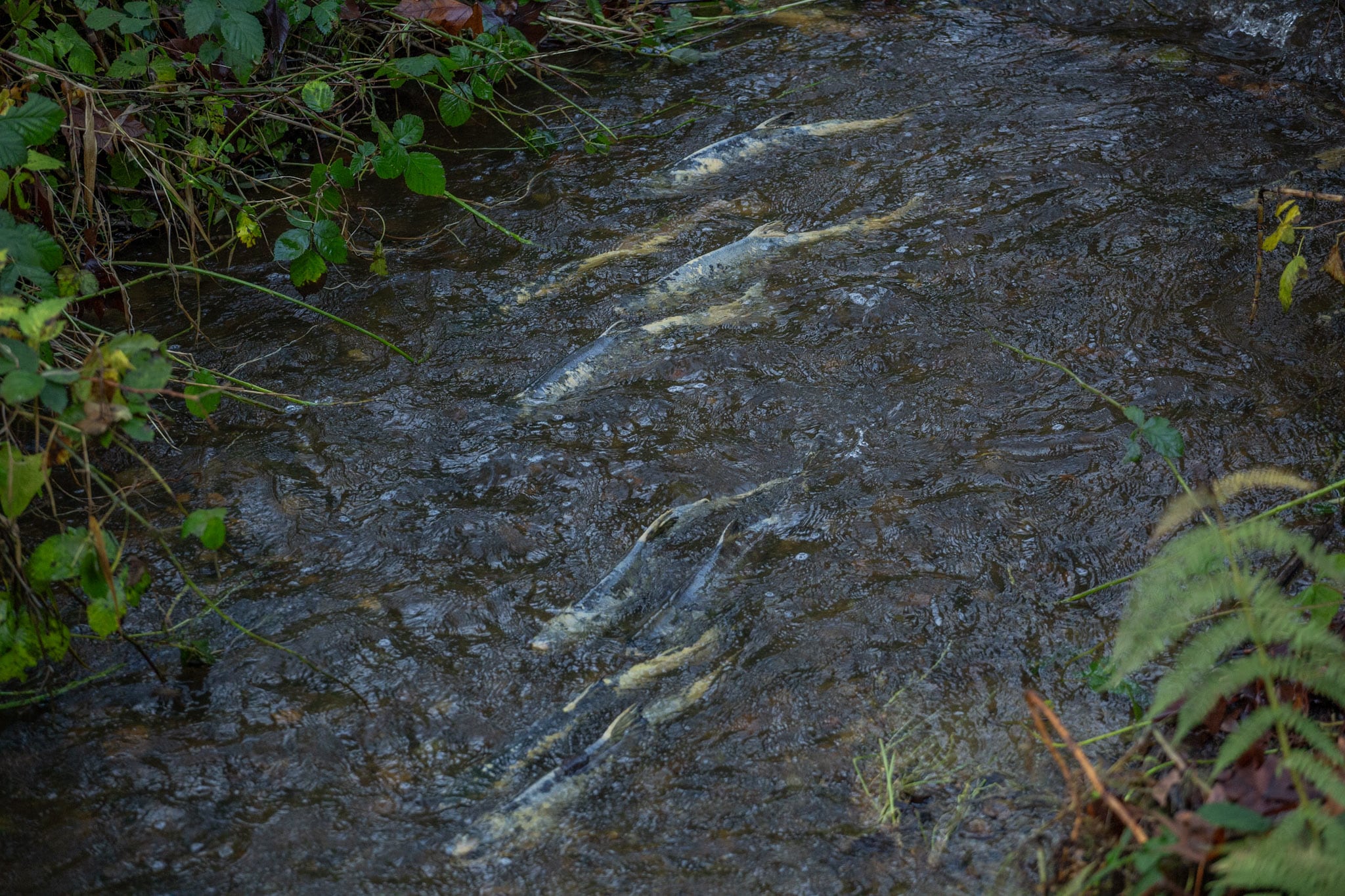
Chum salmon rest in the creek. Photo by Carolyn Bick. © Carolyn Bick
Damming actions
Choked as this creek is with fish, it’s hard to imagine that these waters just last year held no salmon. But an unnatural absence of salmon is not a story alien to these waters, or to the people who helped to restore this creek.
In 1982, when Douglas McDonnell and Kathy Fox purchased their house, no salmon swam through the creek. Decades prior, humans had taken the rest of the natural world for granted, and this deathly silence was a result.
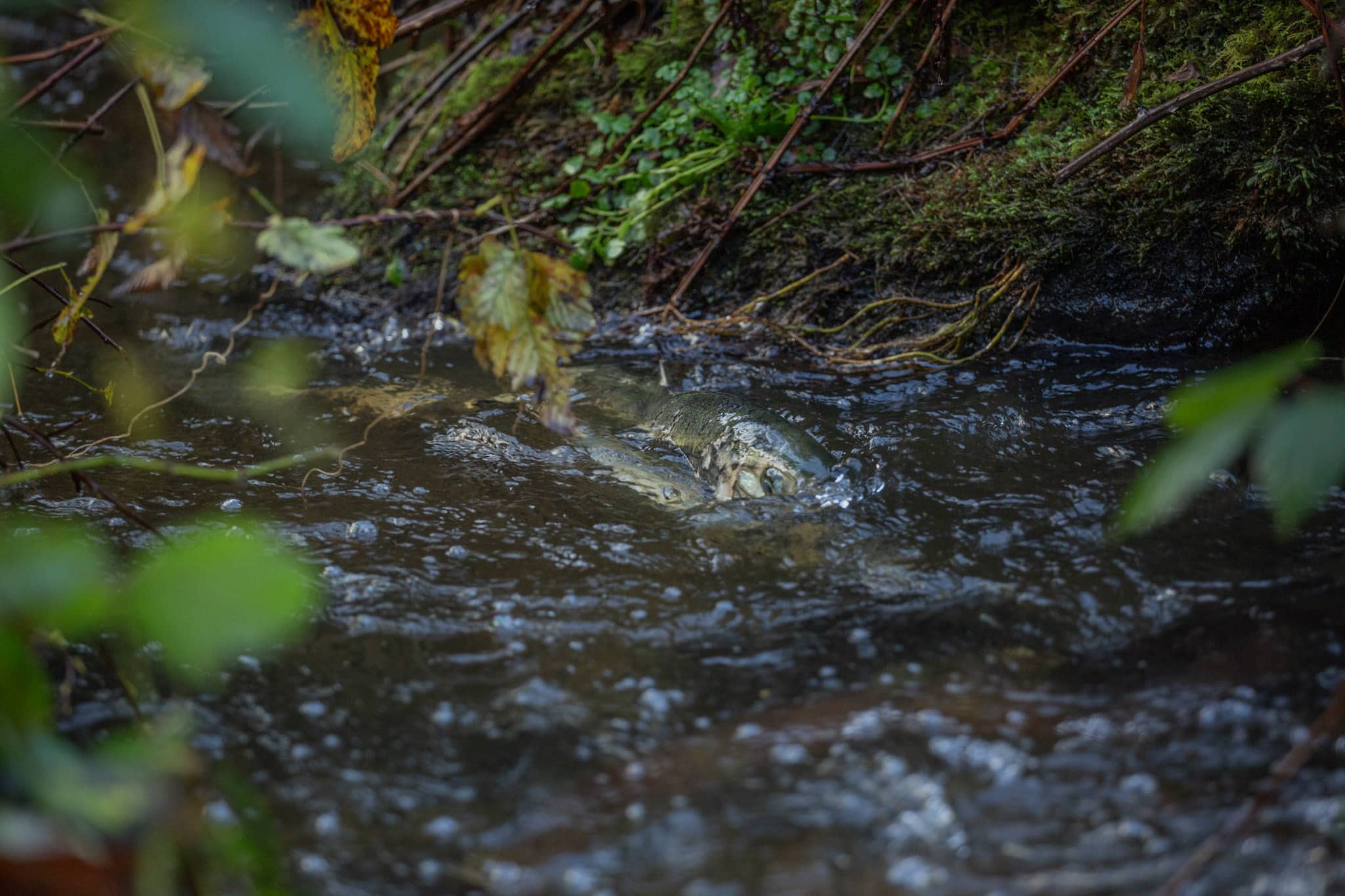
A chum salmon rests in Mark Dickson Creek in Gig Harbor on Nov. 27, 2024. Photo by Carolyn Bick. © Carolyn Bick
“In the late ‘50s — and I won’t mention his name, because I remember him well — there was an older gentleman about midway up the (Ray Nash Valley) who, without a permit, dammed off the creek in order to create a … very large pond that he stocked with rainbow trout, just for his own use,” McDonnell recalled. Not long after that, he said, sometime in the late 1950s or early 1960s, another property owner took out a permit with Pierce County, contracted with an engineer, and dammed off the arm of the creek that runs up to the old Whitmore Farm.
“And that then killed off and extinguished the entire salmon run,” McDonnell continued. “From what I understand, the general attitude back then was, ‘Nature is abundant, and it restores itself, and there’s this unlimited amount of fish out there.’ They just paid no attention to the fact that the salmon run fizzled out.”
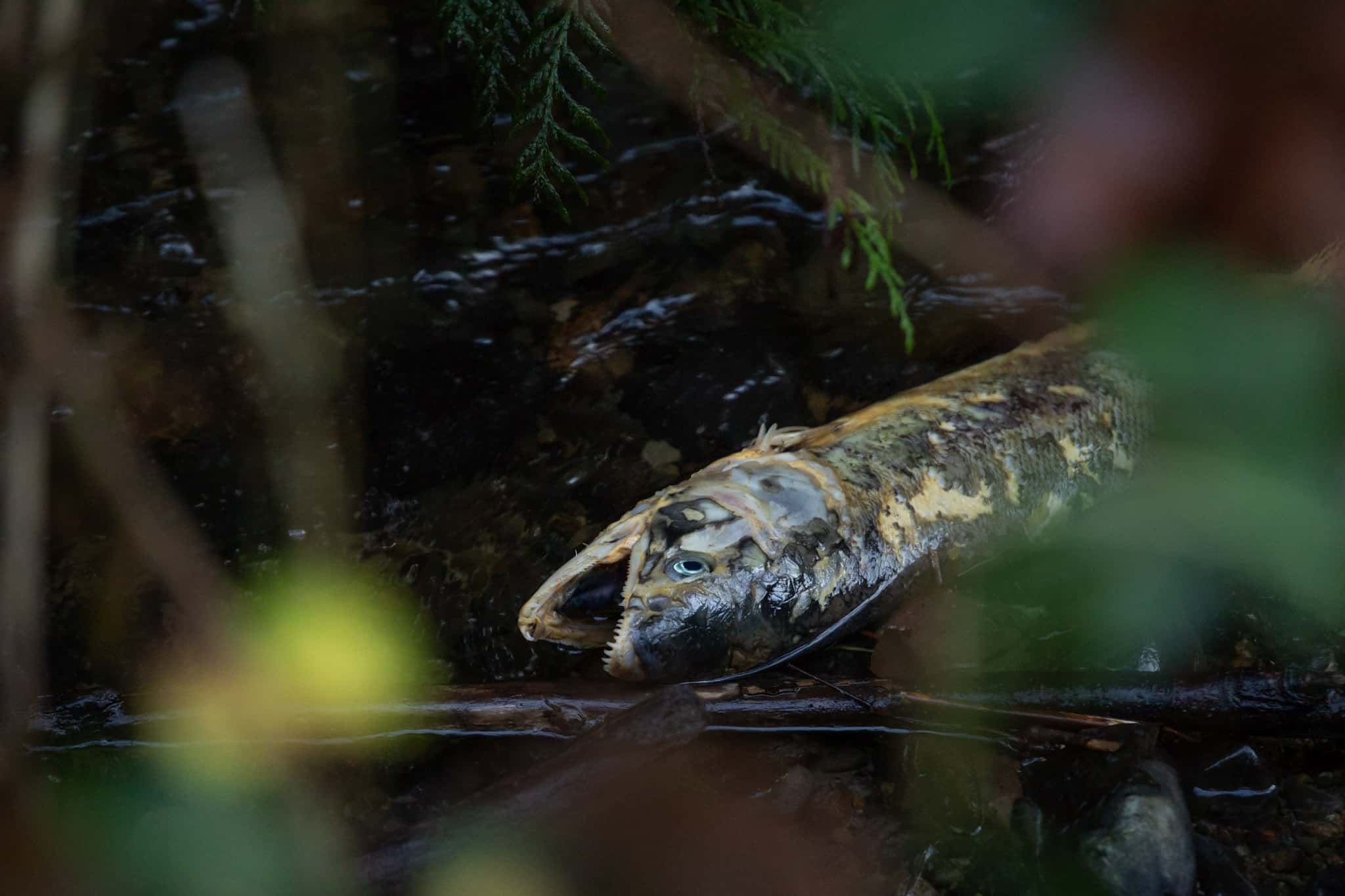
A dead salmon lies in the creekbed. Photo by Carolyn Bick. © Carolyn Bick
A DIY restoration effort
McDonnell is one of the four people who, more than 30 years ago, joined together to restore the creek and its chum salmon population.
He was friends with the late Conrad Dickson, who passed away in June. Dickson — whom McDonnell said was “absolutely pivotal” in the creek’s restoration —grew up by the creek, back when this area “was still seriously the country,” McDonnell said.
“Conrad told me that he remembered vividly that, after the fish had spawned, … the dead carcasses would be so abundant that local people would drive up in their pickup trucks and walk down to the creek and then with pitchforks pick up the dead carcasses and take them back for fertilizer in their fields and their gardens,” McDonnell said. “He told me as a youth and growing up through his teenage years, that the creek sustained a run of silver salmon and cutthroat, and then this time of year, the chum came in.”
McDonnell said that in the 1990s, Dickson contacted the then-director of the state’s Minter Creek Fish Hatchery, Dennis Popochock, for guidance. Popochock and other Department of Fish and Wildlife staff inspected the creek. They advised the restorationists that they needed to clear the creek of invasive, fast-growing plants, like blackberry, and restore a proper creekbed, before they could even think about a successful future salmon run.
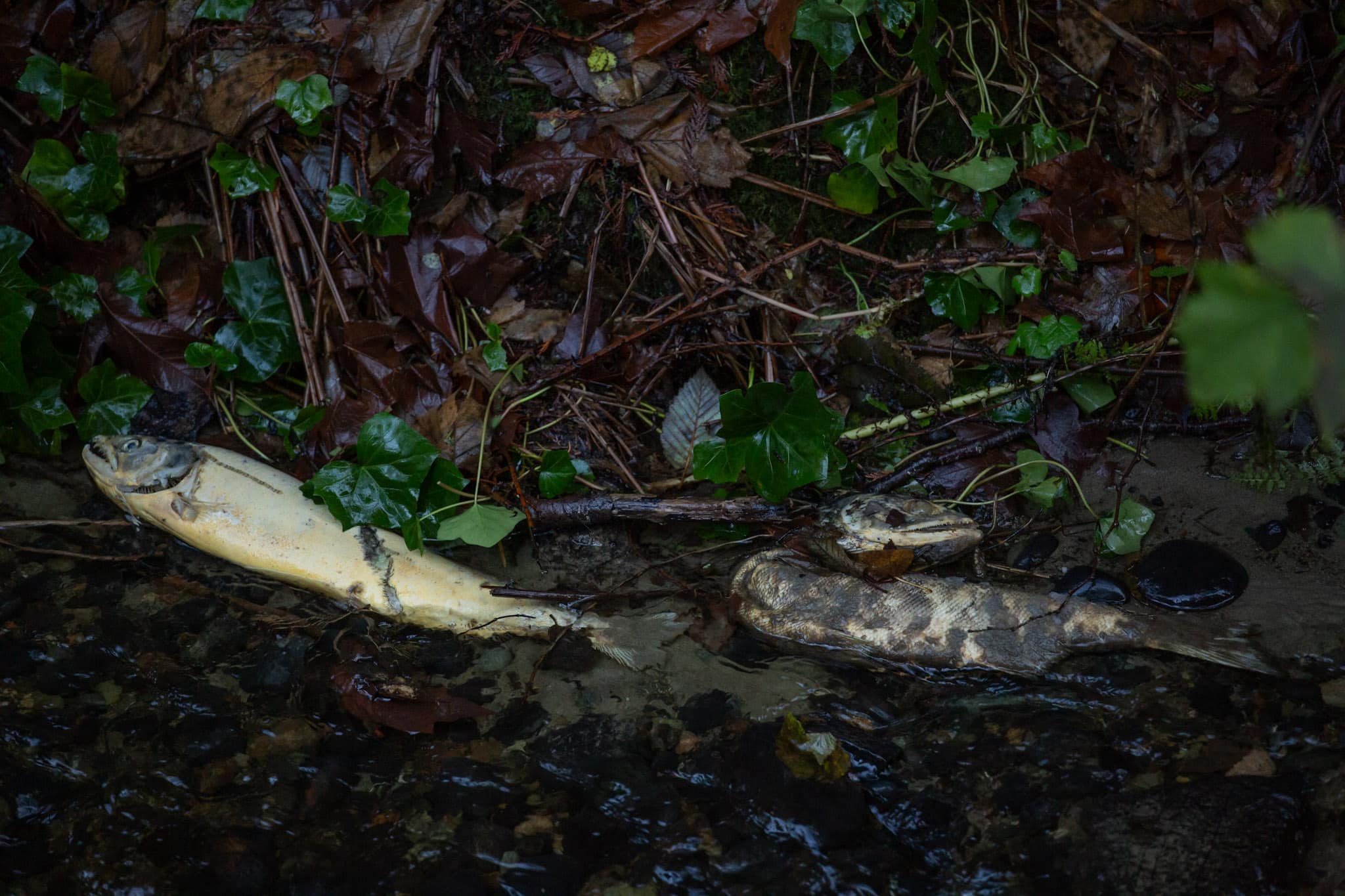
Dead salmon line the creekbed. Photo by Carolyn Bick. © Carolyn Bick
Incubators
So McDonnell, Dickson, and two of their friends got to work. With chainsaws and gravel and tree trunks and buckets, they took out what they could of the blackberries, created resting pools for salmon, and laid down thousands of pounds of gravel.
They also put in two incubators, one up the Whitmore arm of the creek, and another near the dam on the main arm of Mark Dickson Creek. The Minter Creek Fish Hatchery donated tens of thousands of fertilized chum salmon eggs.
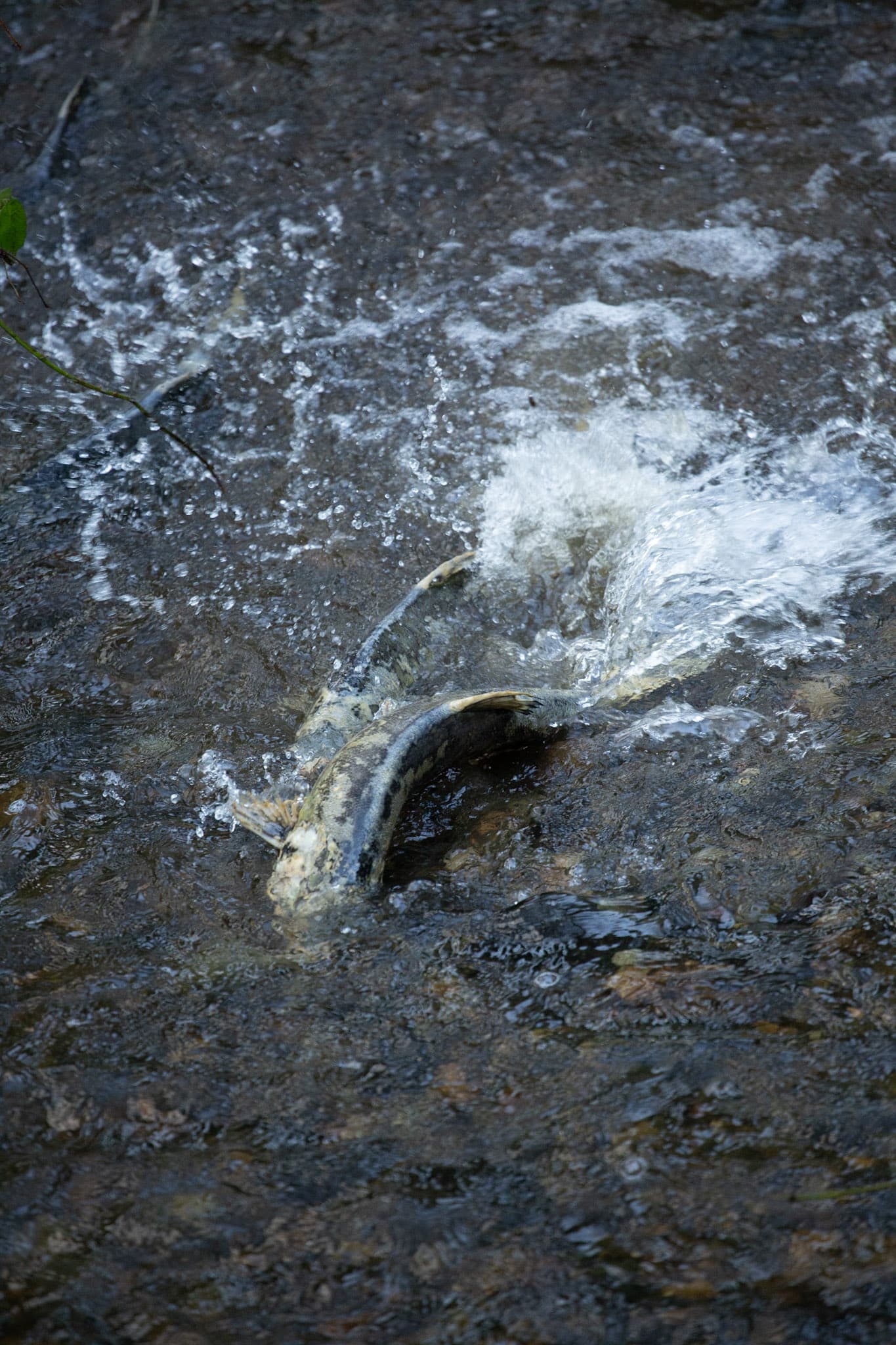
A salmon leaps out of the water, and lands with a splash. Photo by Carolyn Bick. © Carolyn Bick
‘There are chum in the creek!’
“And then that took — God, we did that every single year for five or six years,” McDonnell recalled. “And then I remember getting a phone call from Conrad, and he said, ‘Doug, you’ve got to get down here! There are chum in the creek!’”
And, indeed, there were chum in the creek. McDonnell said that he and Dickson counted somewhere between 19 and 25 spawning pairs headed upstream to spawn in a “redd,” a salmon nest.
The incubators later stopped running. But this doesn’t mean the salmon went away. For the most part, with the exception of a few years whose heavy rains McDonnell suspects washed away all the salmon eggs, the creek saw a fairly steady run of salmon — until last year.
“I’m in contact with people (descended) from the … old, original, Croatian … fishermen from early Gig Harbor, who are still commercial fishermen,” McDonnell said. “I was told last year they were just as stunned as I am (by the lack of fish).”
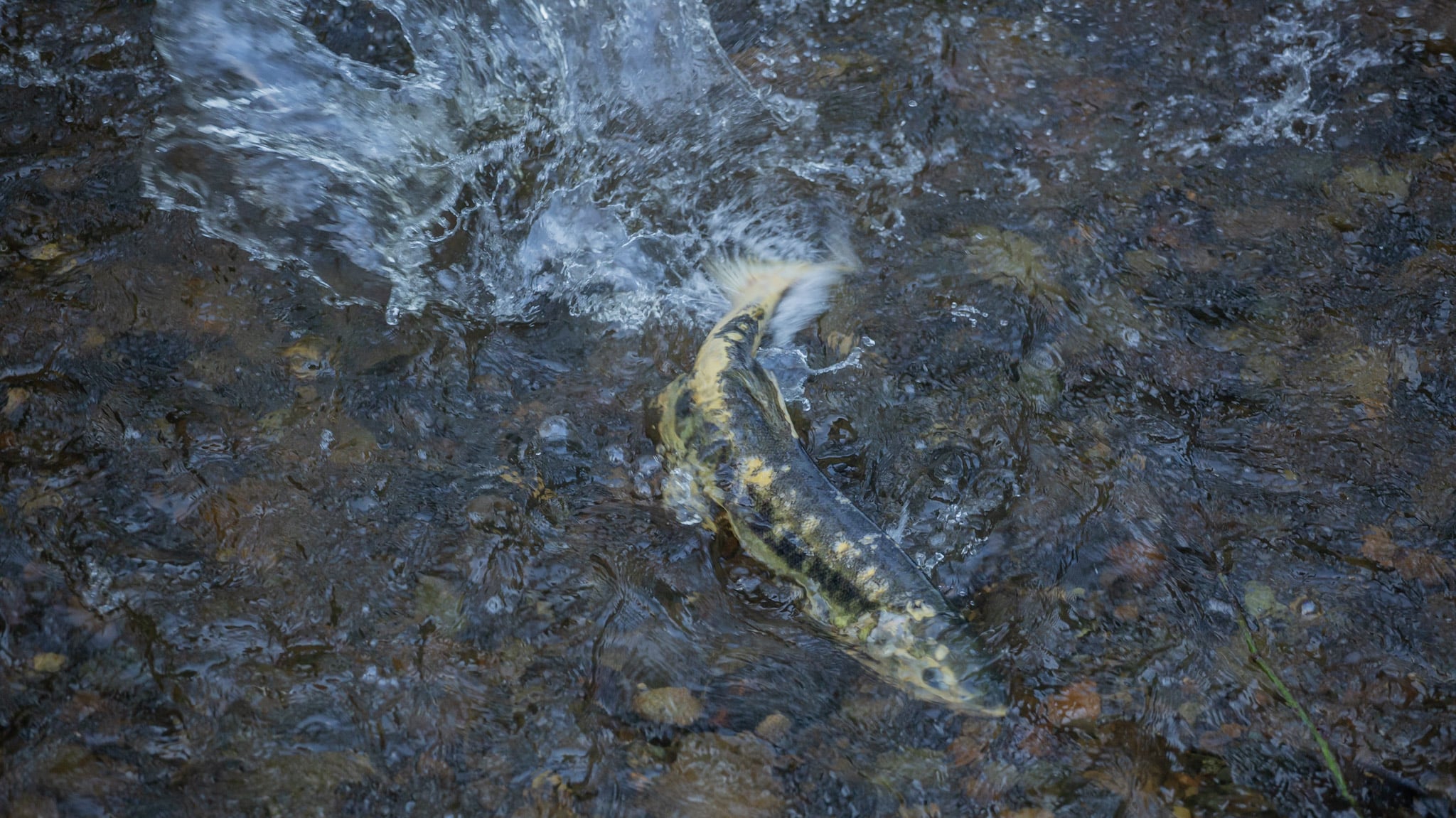
A salmon thrashes his way upstream. Photo by Carolyn Bick. © Carolyn Bick
Huge run this year
The fishermen are just as stunned this year, McDonnell said. It’s “the most robust return of salmon (locally) that they’ve seen in at least 30, 35 years.”
“(Almost) every stream is just full of returning salmon,” McDonnell said. “It really gets our attention. It is so satisfying. (Usually), the chum return is two-and-a-half, at the most three weeks. This return this year has been going on for a little over a month now.”
The run is so good this year, McDonnell said, that endangered orcas have returned to the South Sound in large numbers for extended stays — and some of them are sporting “dead salmon hats,” something scientists haven’t observed since the 1980s. A recent study found that human-led pollution, destruction of habitat, too much noise, and the associated decline in Chinook salmon populations have contributed to the whales’ endangered species status.
But why?
It’s not entirely clear why the run is so good this year. One factor could be that these salmon no longer have to contend with Atlantic salmon fish hatcheries that were breeding grounds for disease and parasites. This is one of the first years the fish don’t have to swim past the aquatic farms.
But beyond that, McDonnell said, this is what happens when humans make an effort to participate in and protect the natural world they belong to.
“It just shows you kind of the yin and the yang of what happened in the 1950s, when the attitude was, ‘Oh, nature is so abundant. There’s this infinite supply of all of the resources, and the herring, and the cutthroat,’” he said. “And, of course, (the salmon) got taken almost to the verge of extinction. But with a little help on our side, and making sure that there is enough escapement and that enough of our salmon resources return to their traditional spawning grounds, I’d say the future looks pretty darn positive.”
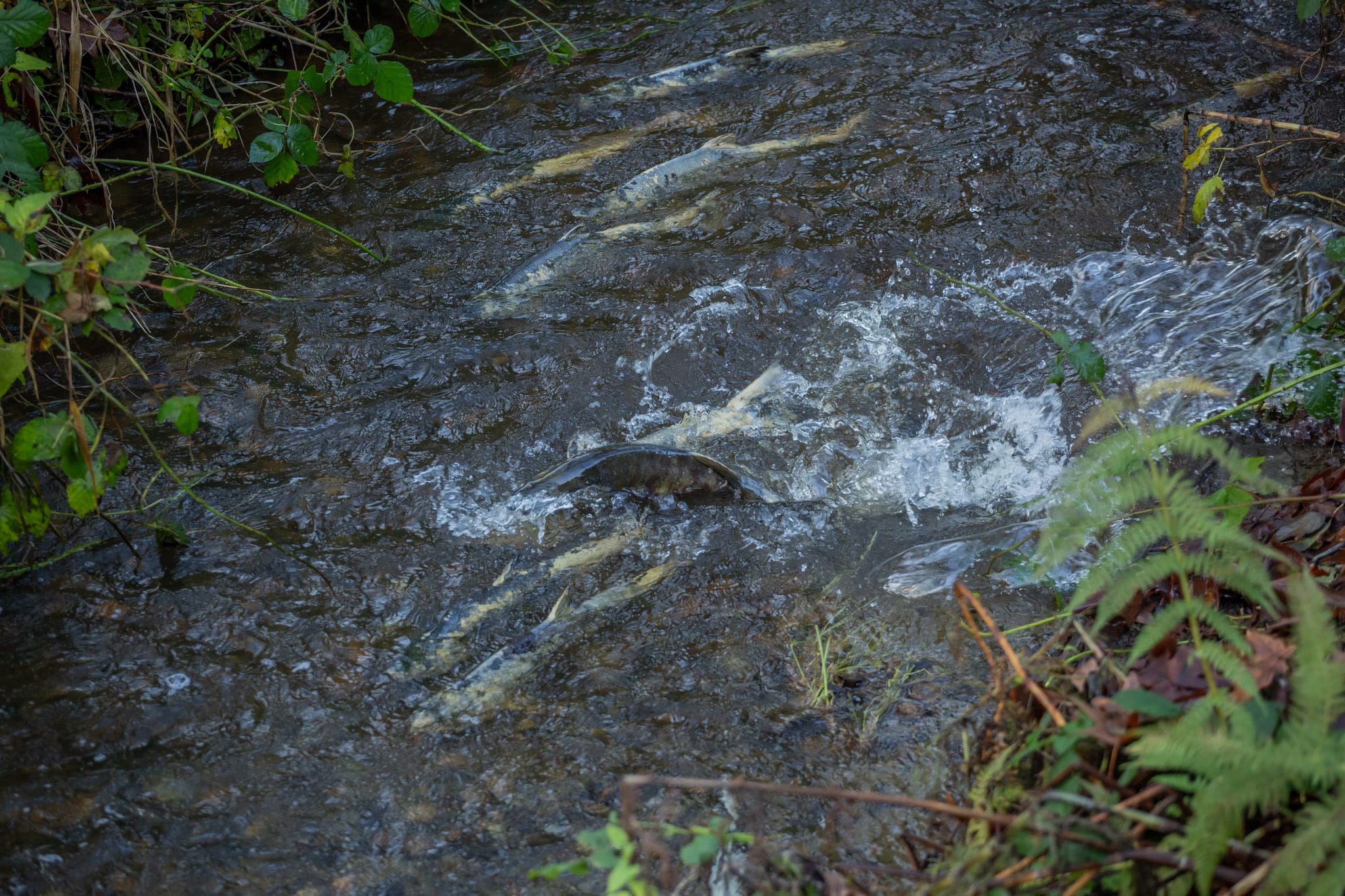
A salmon leaps over others resting in the creek. Photo by Carolyn Bick. © Carolyn Bick
